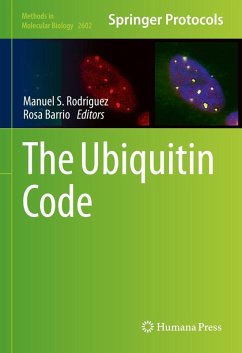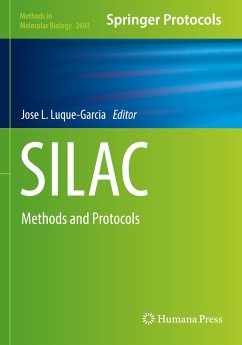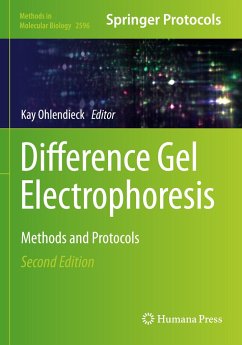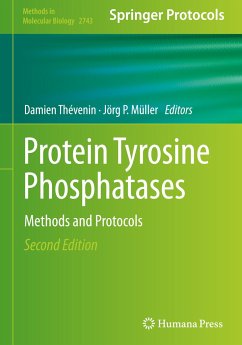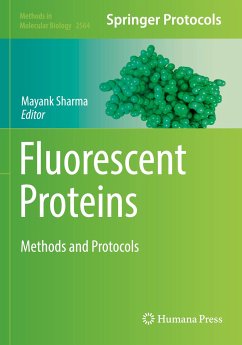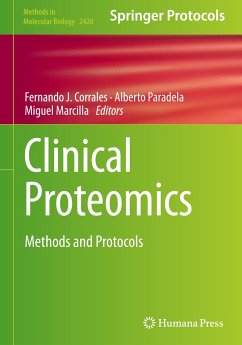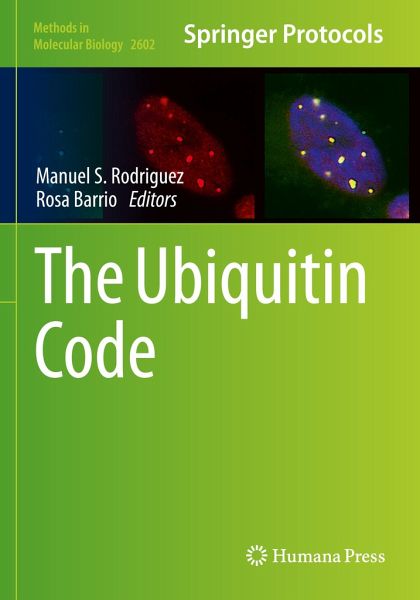
The Ubiquitin Code
Versandkostenfrei!
Versandfertig in 6-10 Tagen
98,99 €
inkl. MwSt.

PAYBACK Punkte
49 °P sammeln!
This volume details novel and popular approaches to decipher the Ubiquitin Code. Chapters guide readers through ubiquitin chain complexity, methods to generate non-hydrolysable ubiquitin-NEDD8, a fully synthetic method for the linear synthesis of fluorescently labelled rhodamine LC3A and LC3B, a HECT ligase-mediated ubiquitylation in vitro, a RNAi-based screening to identify DUBs, a Yuh1 activity assay, a pull-down to isolate K48 and K63 chains using specific nanobodies, identification of NeDDylated protein based in a NEDD8R74K mutant, in vivo identification of NEDDylated proteins from liver d...
This volume details novel and popular approaches to decipher the Ubiquitin Code. Chapters guide readers through ubiquitin chain complexity, methods to generate non-hydrolysable ubiquitin-NEDD8, a fully synthetic method for the linear synthesis of fluorescently labelled rhodamine LC3A and LC3B, a HECT ligase-mediated ubiquitylation in vitro, a RNAi-based screening to identify DUBs, a Yuh1 activity assay, a pull-down to isolate K48 and K63 chains using specific nanobodies, identification of NeDDylated protein based in a NEDD8R74K mutant, in vivo identification of NEDDylated proteins from liver diseases, UbL-ID method to identify ubiquitin-like modified proteins, a LC3/GABARAP capturing system, and methods to isolate peptides that are closely associated with proteasomes or trapped inside the core particle of proteasomes in eukaryotic cells, among others. Written in the successful Methods in Molecular Biology series format, chapters include introductions to their respective topics, lists of the necessary materials and reagents, step-by-step, readily reproducible protocols, and notes on troubleshooting and avoiding known pitfalls.
Authoritative and cutting-edge, The Ubiquitin Code aims to to be a useful practical guide to researches to help further their study in this field.
Authoritative and cutting-edge, The Ubiquitin Code aims to to be a useful practical guide to researches to help further their study in this field.



